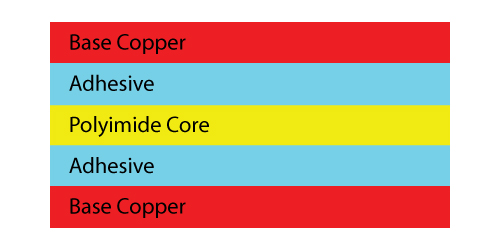This blog post is intended to reinforce the design support we offer at Epec for our flex and rigid-flex PCBs. Technical design and engineering is one of our core foundations which allow us to best help our customers meet their product requirements. Within the post, we'll cover design areas that require special consideration.
Two distinct types of polyimide flex core material constructions are utilized in today’s flex circuit manufacturing: adhesive based and adhesiveless. The difference, as you can probably tell from the name, is the method used to attach the copper layers to the polyimide core. This creates a unique set of material properties for each of the material types which must be factored into designs to meets all requirements and remain cost effective.
For rigid-flex printed circuit boards (PCBs), the space joining rigid material to flex material (Transition Zone) sometimes contains imperfections that, although acceptable, could impact effectiveness of the final part. Transition zone imperfections can include any of the following:
The copper weight and corresponding thickness used in a flexible circuit board need to be carefully selected in order to meet both the electrical and mechanical bend requirements of specific flex circuit design. Copper weight for a flex PCB is both the stiffest and most critical component.
In the flexible printed circuit board manufacturing process, a flex circuit coverlay (aka coverfilm) is used to encapsulate and protect the external circuitry of a flexible circuit board.
A flexible circuit coverlay serves the exact same function as solder mask that is used on a rigid printed circuit board. The difference with a flex coverlay is the needed element of flexibility and durability it provides to the flex PCB design.
Considering using a flexible printed circuit board (flex PCB) in your next project? Flex circuits offer several advantages, whether you plan to use them in a future project or for revamping your existing designs. Here we detail some of the most impactful advantages of flex PCB, including packaging, reliability, capabilities, and cost savings.



















